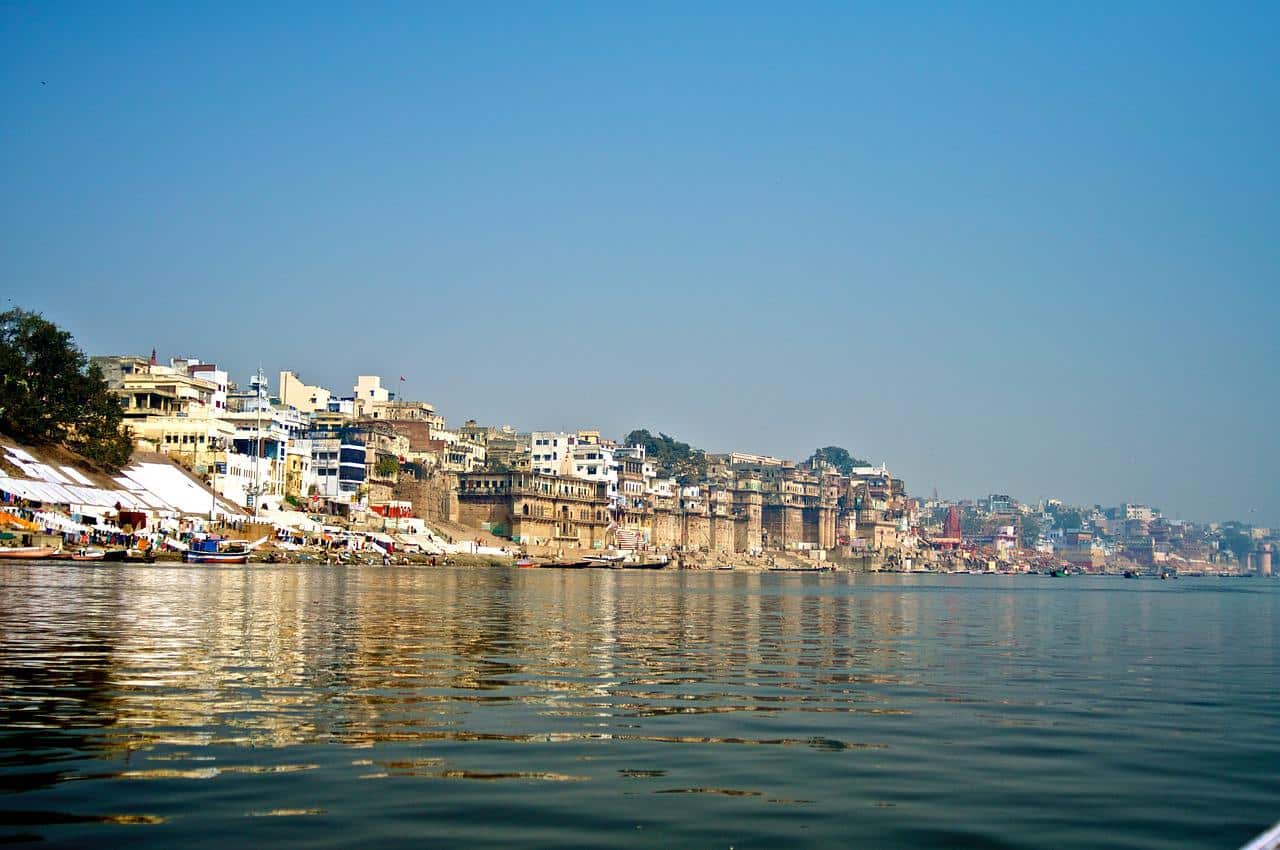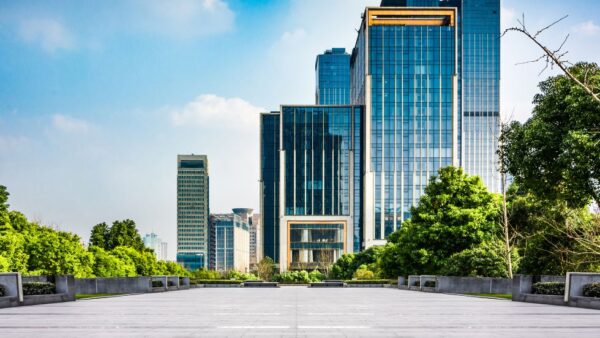India is a land of rivers. We have all been very much accustomed to its rivers spreading around the whole country. Be it small or large, almost every state possesses a river. And historical connection gives us an overview of the creation of the country and its journey with a very old story. Also, the rivers play a very significant role in the country’s economic development. This article is all about the top 10 longest rivers in India that enrich our country by providing life as well as natural beauty. We sometimes confront a question about our rivers. Being a land of rivers, which is the longest river in India? Including the longest river in India, you will be unfolded with 9 more important rivers that are our pride and make India a different identity to the world. So, stick to the article to gain more knowledge about India’s longest river.
The longest river in the world is the Nile but which is the longest river in India? To know this, you need to dig deep into the article. The Indian River system is divided into two parts – Himalayan rivers and Peninsular rivers. Most of the river’s flow towards the eastern part of the country where the rest flow towards the western part of the country. India is a diverse country possessed with many things. We read about the ancient civilization connected to the Indian rivers. To date, rivers are worshipped by the country’s people. In many rituals, we use Gangajal. Divided into two parts, Himalayan rivers are perennial because they get water from rain as well as melting ice whereas the Peninsular rivers are rain-fed because they are only dependent on rainfall. The Himalayan rivers have a large basin where many rivers pass through it. Every river has its own to tell. The major Himalayan rivers are the Indus river, Ganges river, Yamuna river, and the Brahmaputra. On the other side, the main Peninsular rivers are Mahanadi, Godavari, Krishna, and Cauvery.
It is still considered as sacred or holy by the Hindus. Living in India, it’s necessary to keep knowledge about the longest river of India. While it can be helpful for your government exams, it can also be helpful to teach your children about the rivers of the country. If you take India’s map, you will be confronted with the country being surrounded by rivers. Where the West-South portion has the Arabian Sea, the East-South portion gives you the Bay of Bengal. Large portions of the rivers drain into the Bay of Bengal. Both are very significant to our history. The presence of the residence by the banks of the rivers gives us an overview of how important a river played in our country. Rivers are also very important for the production of hydroelectricity. It gives us electricity in the whole country. So far, this was the description of the importance of rivers in India. Now, we will see the top 10 longest rivers in India.
Top 10 Longest Rivers in India
Ganga
Ganga is the longest river in India. It is the country’s pride. This is also one of the most sacred rivers in the country and is worshipped by millions of residents. Originating from Gangotri, it has created the world’s largest delta in West Bengal. Spread 2525 km, Ganga covers Uttarakhand, West Bengal, Uttar Pradesh, and Bihar. If you were searching for India’s largest river, then Ganga comes first on the list. Though this is the sacred and longest river in India, it is also a very polluted river in India. The last part ends in Bangladesh where it eventually drains into the Bay of Bengal. It starts at the convergence of Bhagirathi and Alokananda in Devprayag which is in Uttarakhand. Where Bhagirathi is considered as the source of Hindu mythology, Alokananda is the source of hydrology because of its greater length. More interesting is its 140 species of fish, 90 species of amphibians, reptiles, mammals including gharials, and South Asian river dolphins.
For your information, some of the primary left tributaries are Rmganga, Gomti, Ghaghara, Gandak, Koshi, Garra, Burhi Gandak, Mahananda. On the right tributaries, there are Yamuna, Tamsa, Son, Punpun, Kiul, Chandan, Karamnasa. Ganga is also known as the 3rd largest river in the world. It is worshipped as the Goddess Ganga. We all are fascinated by its beauty. We don’t leave any chance to capture its beauty through our camera. As much as it is a polluted river in the country, it is also one of the polluted rivers in the world. Many tourists just come to enjoy its beauty. Either it is tide or ebb, Ganga looks spectacular every time. What else can be so beautiful? The ritual of carrying Gangajal is still prevalent in our country. Recently, an environmental initiative has been taken up by the government to clean up the river but it has failed.
Godavari
Let’s look at our 2nd longest river in India which is the Godavari. It’s also a very ancient name in our mythology. It occupies about 10% of the country’s geographical location. The river originates from Trimbakeshwar, Nashik, Maharashtra, and flows towards Telangana, Andhra Pradesh, Chhattisgarh, and Odisha. And eventually, it drains into the Bay of Bengal. It is another largest river basin after Ganga and Indus. In terms of length, it occupies 1465 km. This is the largest in Peninsular India. It is popularly called the Dakshin Ganga (the Ganges of the South). For millions of years, Godavari has been in our Hindu scriptures and possesses a rich cultural history. Over the few years, Godavari has seen several barrages and dams. The river covers Maharashtra, Telangana, Chhattisgarh, Andhra Pradesh, and Odisha.
Some of the left tributaries are Banganga, Kadva, Shivana, Purna, Kadam, Pranahita, Indravati, Taliperu, and Sabari. On the other hand, the right tributaries are Nasardi, Pravara, Sindphana, Manjira, Manair, and Kinnerasani. Major dams are Gangapur Dam, and Sriram Sagar Dam. The Krishna Godavari basin is one of the shelters of olive ridley sea turtles. This is also home to endangered fringed-lipped carp. Some of the popular sanctuaries that are surrounded by the river are Bor Wildlife Sanctuary, Gautala Wildlife Sanctuary, Pench National Park, Nagzira Wildlife Sanctuary, Indravati National Park, Kawal Wildlife Sanctuary, etc. The second-largest mangrove in the country, Coringa Mangrove Forest, is situated here. Bogatha, Chitrakoot, Kuntala, Pochera, Sahastrakund are some of the waterfalls surrounded by the Godavari including one of the highest waterfalls in Southern India, Dumduma Waterfall. If you were looking for the top 10 longest rivers in India, then the Godavari comes 2nd in this list with its 1465 km of length after Ganga.
Yamuna
The Yamuna is the 3rd longest river of India with its 1376 km length in our list of the top 10 longest rivers in India. Originating from the Yamunotri glacier in the lower part of Himalaya in Uttarakhand, this is also the 2nd largest tributary river of the Ganga. It traverses through Uttarakhand, Delhi, Himachal Pradesh, Haryana, and Uttar Pradesh and ultimately merges into the Ganga at the Triveni Sangam, Prayagraj, famous for Kumbh Mela. This river is also highly revered and worshipped by the Hindus as Goddess Yamuna. Its left tributaries are Tons, Hindon, Hanuman Ganga, and Sasur Khaderi. On the right tributaries, there are Giri, Baghain, Chambal, Betwa, Sindh, and Ken. According to statistics, nearly 57 million people are dependent on the Yamuna river. It also supplies 70% of water to Delhi. The Upper Yamuna water quality is called from its origin at Yamunotri to Okhla barrage.
The main causes of the lower quality water are – poor quality of water released by severe treatment of plants, household disposals, soil erosion, and chemical emission from fertilizers, herbicides, pesticides as well as industrial plants. The famous Taj Mahal is surrounded by the Yamuna. The earliest mention of the river is found in Rig Veda and also in Atharvaveda. The name means excessive love in those Vedic scriptures. Not only in Vedic scriptures, we find the mention of the Yamuna in the Indica, Mahabharata also. Most of the great empires were based in the Yamuna Basin that includes Magadha, Maurya Empire, Shunga Empire, Kushan Empire, and Gupta Empire. This river was revered throughout their kingdoms that flourished the existence of the river. The National Green Tribunal Act directed the government to declare a conservation zone in Delhi and Uttar Pradesh.
Narmada
To talk about India’s largest river, Narmada comes 4th on the list. River Narmada is also called Reva. This is the largest flowing river in Madhya Pradesh and is also located in Gujarat also. For its immense contribution to MP and Gujarat, the river is called a lifeline. Originating from Amarkantak Plateau, Madhya Pradesh, it forms the boundary of North and South India. It traverses through the city of Maharashtra, finally, it merges into the Gulf of Khambhat, by the Arabian Sea. Some of the left tributaries are Kharmer, Burhner, Banjar, Temur, Kharkia, Deb, Board, etc. On the other hand, the right tributaries are Silgi, Balai, Gaur, Hiran, Biranjo, Tendoni, Barna, Jamner, etc. It spreads 1312 km in length.If you are looking for bracelet. There’s something to suit every look, from body-hugging to structured, from cuffs to chain chain bracelet and cuffs.
Narmada is one of the seven holy rivers according to Hindu scriptures. It was referred to by Ptolemy and Periplus. We get reference in the Ramayana, Mahabharata, and Puranas. Because of its historical connection to the Reva Khand of Vayu Purana and Reva Khand of Skanda Purana, Narmada is called the Reva. Many fables are heard about this river either by our grandparents or read from books. If we go back to the pages of history, we come to know that Pulakeshin II, emperor from the Chalukya dynasty defeated Harshavardana of Kannauj on the banks of the river. Some of the national parks and wild sanctuaries are Kanha National Park, Satpura National Park, Mandla Plant Fossils National Park, etc. The Government of India set up the Narmada Water Disputes Tribunal in 1969 under the Interstate River Water Disputes Act.
Krishna
With a length of 1300 km, the Krishna river comes 5th in our list of the top 10 longest rivers in India. This name is little known for many but has a great significance in our ancient history. If you talk about India’s biggest river, then the Krishna river comes 4th on the list in terms of water inflows. Originating near Mahabaleshwar, the river flows through Sangali, Konya, Vijayawada, and then finally merges into the Bay of Bengal. Some of the left tributaries are Bhima, Dindi, Musi, Paleru, etc. The right tributaries are Venna, Konya, Panchganga, Malaprabha, etc. The river is also called Krishnaveni.
This is one of the major sources of irrigation for some states such as Maharashtra, Karnataka, Telangana, and Andhra Pradesh. The river causes soil erosion during the monsoon floods. The largest tributary of the Krishna river is the Tungabhadra river. The river is also revered by Hindus which is proved by the Hindu scriptures. Because of the Krishna Pushkaram fair on the banks of the river every 12 years, the river has been famous to many. There are also many pilgrimages alongside the river. The first holy place on the river is the Mahaganpati Mandir and Kashivishweshwar at Wai.
Indus
Let’s look at the 6th longest river in India which is the Indus. We all are very accustomed to this name because of its connection to the name of our country. This is also the birthplace of the Indus Valley Civilization. Originating from the Mansarovar Lake, it flows through Ladakh, Gilgit, and Baltistan. Then it enters Pakistan and finally merges into the Arabian Sea, near Karachi. Its length covered only in India is 1114 km. Some of the left tributaries are Zanskar, Suru, Soan, Jhelum, Chenab, Sutlej, etc. The right tributaries are Shyok, Hunza, Gilgit, Swat, Kunar, Kabul, etc.
The states and provinces covered by the river are Ladakh, Punjab, Sindh, Tibet, Gilgit-Baltistan, and Khyber Pakhtunkhwa. The Indus River is the main water resource for Pakistan’s economy. The ultimate source of the Indus river in Tibet. The river tells the story of Harappa and Mohenjo Daro. The description of the Sindhu river in the Rig-veda is believed to be the present day of the Indus river.
Brahmaputra
In our list of the top 10 longest rivers in India, Brahmaputra comes in 7th position. This is the second river that originated from the Mansarovar ranges. A river is mentioned as a lady in India but this is the only river that is mentioned as male. It comes from Arunachal Pradesh and flows through Assam. Finally, it merges into the Bay of Bengal traversing through Bangladesh and China. It is called the Yarlung Tsangpo in China.
This is a very significant river in Assam. In India, its total length in India is 916 km. The famous Kaziranga National Park is situated on the banks of the Brahmaputra river. Some of the left tributaries are Dibang, Lohit, Dhansiri, etc. The right tributaries are Kameng, Manas, Jaldhaka, Teesta, Subansiri, etc.
Mahanadi
A major river in east-central India is Mahanadi. This river is famous for the Hirakud Dam. Originating from Dhamtari, Dandakaranya, Chhattisgarh, it flows through Odisha and finally drains into the Bay of Bengal. With 858 km in length, the river is tagged as one of the top 10 longest rivers in India. Some of the left tributaries are Seonath, Mand, Ib, and Hasdeo. The right tributaries are Ong, Parry, Jonk, and Telen.
The river has been mentioned in Ptolemy’s work where he described the importance of this river to the people of Cuttack and Sambalpur. Today, the river is best known for its fertile soil and flourishing agriculture.
Kaveri
Kaveri is another important river in India originating from Talakaveri at the western ghats of Karnataka. It flows through Tamil Nadu and finally merges into the Bay of Bengal. This 800 km long river is the sacred river in Southern India. The left tributaries are Harangi, Hemavati, Shimsha, Arkavathy. The right tributaries are Lakshmana Tirtha, Kabini, Bhavani, Noyal, Amaravati, and Moyar.
The river is mainly used for irrigation, household consumption, and producing electricity. Along its journey from its source to the destination, the river forms two islands in Srirangapatna and Shivanasamudra. Kaveri is considered one of the top 10 longest rivers in India.
Tapti
Originating from Multai, Madhya Pradesh, it flows through Maharashtra and Gujarat. Finally, it merges into the Gulf of Khambhat by the Arabian Sea. With its 724 km of length, Tapti comes as one of the top 10 longest rivers in India. It is believed the name comes from the goddess Tapati, who was the daughter of Surya and Chhaya.
The river is also connected to the 1968 flood where thousands of people died during the flood as well as the epidemic of cholera from the contamination of water. The city of Surat was submerged under 10 feet for several days. Now, it is under control by establishing Ukai Dam.
Conclusion
This was all about the top 10 longest rivers in India. I hope now it is clear what is India’s longest river. It is also very interesting to know about the stories of such rivers.




